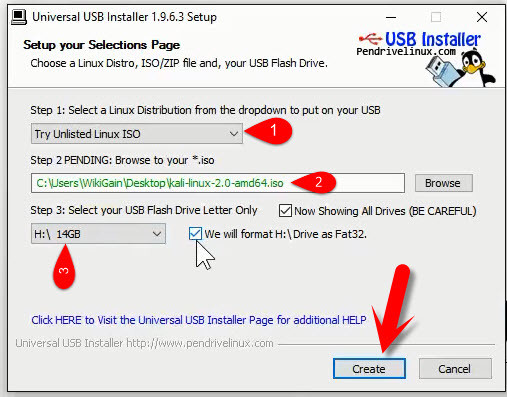
It would be great if you put all the ISO files on a flash drive and make a multiboot USB. You can’t waste a flash drive for each of them. Each is having its multiple versions and features. There are many operating systems available in the market, either free or paid. It’s effortless to put ISO files on portable flash drives by using various tools like Windows USB/DVD tool and the Startup Disk Creator in Ubuntu. See also how to fix CPU at 100% when nothing is running problem on Windows, how to Disable Or Enable Secure Boot on Windows 10 & 11, and how to Solve “The parameter is incorrect” problem on External Hard Disk in Windows.Ĭreating a bootable USB disk comes in handy when we have to reinstall our operating system in the case of a system failure. The aim is to make a single USB to be a multiboot device. This write-up will take through the process of making one single USB drive to have more than one Bootable Operating System ISO file.

To format the partition, type format fs=ntfs quick, and then click ENTER.Being able to put in a single USB to your PC and be presented with several choices of Operating Systems be it Windows or Linux to Boot from is something that will ease your workloads as IT, Admin. To select the partition that you just created, type select partition 1, and then click ENTER.

To create a new primary partition on the USB flash drive, type create partition primary, and then click ENTER. This command deletes all data from the USB flash drive. Note the drive number or drive letter of the USB flash drive.Īt the command prompt, type select disk, where X is the drive number or drive letter of the USB flash drive, and then click ENTER.

The list disk command displays all the disks on the computer. In the new command line window that opens, to determine the USB flash drive number or drive letter, at the command prompt, type list disk, and then click ENTER. Open a Command Prompt window as an administrator. Insert a USB flash drive into a running computer. Restore or repair your server running Windows Server Essentials Restore a full system from an existing client computer backup To create a bootable USB flash drive for use in recovering or reinstalling Windows on a PC instead of a server, see Create a recovery drive.įor additional scenarios in which you may want to create or use a bootable USB flash drive, see the following topics:


 0 kommentar(er)
0 kommentar(er)
